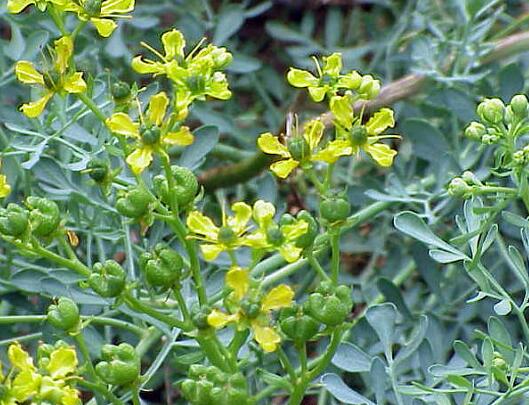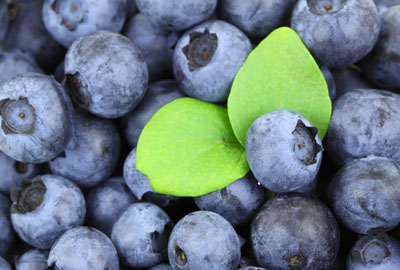The most complete classification and formulation of plant diseases in history
Plant disease refers to the phenomenon that plants undergo a series of morphological, physiological and biochemical pathological changes under the influence of biological or abiotic factors, thus affecting human economic benefits. The symptoms of plant diseases are mainly divided into five types: discoloration, necrosis, decay, wilting and deformity. different diseases require different formulations, so let's take a look at them in detail.
Commonly used protective fungicides (contact fungicides): mancozeb, chlorothalonil, sulfur and copper preparations (such as Bordeaux solution, copper hydroxide, basic copper sulfate, basic copper chloride, cuprous oxide, etc.).
Commonly used internal absorption fungicides: carbendazim, methyl thiophanate, metalaxyl, triadimefon, diniconazole, difenoconazole, propiconazole, azoxystrobin, carbendazim, carbendazim, enamyl, cyanocyanide, pyrimidine, etc.
Broad-spectrum fungicides: chlorothalonil, mancozeb, methyl carbendazim (converted to carbendazim in plants, effective against spots, pink rust, Mucor, but ineffective against frost blight diseases), propionate zinc.

Frost blight disease
Main diseases: downy mildew, late blight, white rust, Phytophthora root rot, etc.
Biological prevention: Pythium oligosporium / Trichoderma / Bacillus licheniformis / berberine + sodium alginate
Chemical prophylaxis: mancozeb / chlorothalonil + polyantimycin / Wuyistin + humic acid / brown sugar
Initial formula: methyl frost manganese zinc / dialkynyl acylamide / enoyl manganese zinc / urea manganese zinc / aldicarb hydrochloride / + allicin + polyantimycin / Wuyistin + humic acid / brown sugar
Medium-term formula: fluoromycete (Yinfuli) / pyrazolyl / oxazolyl urea nitrile (Yikuangjing) / propionamide (Prik) + chlorobromoisocyanuric acid + polyantimycin / Wuyisocin + humic acid / brown sugar
Suitable for crops: leafy vegetables, eggplant fruits, melons, legumes, onions and garlic
If the epidemic disease occurs, if the level is added to one level, the speed of prevention and control should be faster.
Prevention of tomato gluten rot: take diazepam (oxime tebuconazole) + humic acid / brown sugar
Treatment of tomato gluten rot: Yinfari (fluorochloramyl) + Yikuanjing (oxone frost urea nitrile) + humic acid / brown sugar
Mucor disease
Main symptoms: grey mold, leaf mold, Sclerotinia sclerotiorum, etc.
Biological prophylaxis: Trichoderma / berberine / catechin + sodium alginate
Chemical prophylaxis: mancozeb / chlorothalonil + polyantimycin / Wuyistin + humic acid / brown sugar
Initial formula: isocourea / pyrimidine / curcumin + benzoconazole + allicin / chlorobromoisocyanuric acid + polyantimycin / Wuyisocin + humic acid / brown sugar
Medium-term formula: nicotinamide / pyrimidine cyclamine + benzimiconazole + allicin / chlorobromoisocyanuric acid + polyantimycin / Wuyisocin + humic acid / brown sugar
The formula of leaf mold: Benzoconazole + polyantimycin + allicin + humic acid / brown sugar.
The formula of coal mildew disease: isobarbamide + benziconazole + allicin.
Suitable for crops: leafy vegetables, eggplant fruits, melons, legumes, onions and garlic
Spot disease
Main symptoms: Brown spot, anthracnose, scab, leaf spot, early blight, etc.
Prevention formula: polyantimycin / Wuyisin + sodium alginate
Treatment formula: azole + allicin + polyantimycin / Wuyisin + humic acid / brown sugar
Prevention formula of scar spot disease: mancozeb / carbendazim / carbendazim / chlorothalonil + sodium alginate
Treatment formula for scar spot disease: triazoles (benzimidazole, propiconazole, flusilazole, tebuconazole) / imidazoles (prochloraz, fluromycin) / methoxyacrylates (etherin, pyrazolyl) / dicarbimide (isocarbamide) + Chunremycin + allicin + humic acid / brown sugar
Suitable for crops: leafy vegetables, eggplant fruits, melons, legumes, onions and garlic
Note: the dosage of azoles in melons and legumes is reduced by half, and eggplant fruits are used cautiously before flowering and fruit setting.
Pink rust disease
Main symptoms: powdery mildew, rust, etc.
Prevention formula: polyantimycin / Wuyisin + sodium alginate
Treatment formula: azoles / ethoxime / enoxime + allicin + humic acid / brown sugar + silicon fertilizer
Suitable for crops: leafy vegetables, eggplant fruits, melons, legumes, onions and garlic
Note: the dosage of azoles in melons and legumes is reduced by half, and eggplant fruits are used cautiously before flowering and fruit setting.
Root wilt disease
① verticillium wilt
Prevention formula: horseradish / copper acetate / copper sulfate + humic acid + EM/CM (Trichoderma harzianum can be used)
Treatment formula: carbendazim / metachlorin + Jinggangmycin / pyrimidine nucleoside / polyantimycin + rooting peptide + EM/CM
② bacterial wilt
Prevention formula: horseradish / copper acetate / copper sulfate + humic acid + EM/CM
Treatment formula: streptomycin sulfate / streptomycin / propofol / thiobactam copper + rooting peptide + EM/CM
③ Phytophthora root rot
Prevention formula: horseradish / copper acetate / copper sulfate + humic acid + EM/CM
Treatment formula: oxalic frost manganese zinc (disinfectant alum, has good effect on downy mildew, Pythium, white rust fungi) / propionamide aldicarb (Prike) + carbendazim + tocopherol + rooting peptide + EM/CM
④ stem rot
Prevention formula: horseradish / copper acetate / copper sulfate + humic acid + EM/CM
Treatment formula: thiophanate methyl + carbendazim + pyrimidine nucleoside / polyantimycin + EM/CM
⑤ sclerotinia disease
Prevention formula: copper acetate / copper sulfate + humic acid + EM/CM
Treatment formula: isocourea / pyrimidine / Pythalide / sclerotiorin + allicin + polyantimycin
⑥ vine blight
Prevention formula: carbendazim / promethazine + aminooligosaccharins
Treatment formula: tocopherol + thiram + isofloxide / benziconazole + imidamide
⑦ Fusarium wilt catchment disease
Prevention formula: horseradish / carbendazim / promethazine + EM/CM
Treatment formula: thiophanate methyl + carbendazim + methyl frost manganese zinc / oxidize manganese zinc + Trichoderma harzianum
⑧ root knot nematode disease
Control formula: avermectin / doxacin / Fuqiduo + chitin + rooting peptide
Suitable for crops: eggplant fruits, melons, legumes
twelve
Time: 2019-04-12 Click:
- Prev

Where is the right place to grow blueberries and what is the benefit?
Southern blueberries are generally planted in the open air, according to different latitudes, different varieties and different ripening periods. Where is the right place to grow blueberries, and what is the benefit? Yunnan open-air blueberries can begin to ripen in early March. Open-air blueberries in Hunan, Jiangxi and other places ripen from the end of April to early May. Jiangsu, Anhui
- Next

What about the rotten roots of Cymbidium? it is a plant that can remain evergreen all the year round.
What about the rotten roots of Cymbidium? it is a plant that can remain evergreen all the year round.
Related
- Fuxing push coffee new agricultural production and marketing class: lack of small-scale processing plants
- Jujube rice field leisure farm deep ploughing Yilan for five years to create a space for organic food and play
- Nongyu Farm-A trial of organic papaya for brave women with advanced technology
- Four points for attention in the prevention and control of diseases and insect pests of edible fungi
- How to add nutrient solution to Edible Fungi
- Is there any good way to control edible fungus mites?
- Open Inoculation Technology of Edible Fungi
- Is there any clever way to use fertilizer for edible fungus in winter?
- What agents are used to kill the pathogens of edible fungi in the mushroom shed?
- Rapid drying of Edible Fungi

